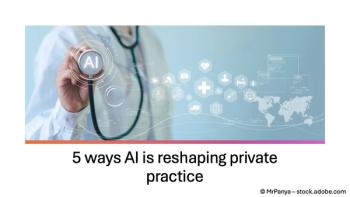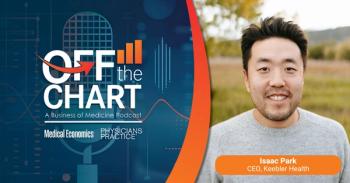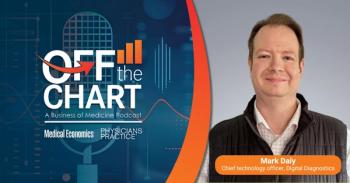
The Tech Doctor: Never ‘Write’ Another Script
How electronic prescribing will make your life easier and your patients healthier.
One basic tenet in the emerging digitization of healthcare is to connect physicians and the organizations that serve them electronically. This is beginning to happen on a nationwide scale between physician practices and pharmacies.
The vision: Physicians using EMRs and e-prescribing tools will be able to electronically send and receive prescriptions and refill requests directly with retail pharmacies, eliminating the handwritten patient script.
The effort is being led by SureScripts, a company formed by the pharmacy industry in 2001. Pharmacies were seeking an alternative to the current drugstore status quo, which relies on handwritten and sometimes illegible scripts as well as frequent delays waiting on hold with doctors’ offices for refill requests or to get clarification on prescriptions.
SureScripts’ solution: a nationwide network that essentially allows participating physicians and pharmacies to securely e-mail prescription-related requests to one another.
For physicians to join this network, they must first have an EMR or e-prescribing tool that has been formally approved by SureScripts for participation in the program. More than 60 EMR and e-prescribing software applications have been certified thus far. Once physicians are part of the network, the patient scripts they “write” are electronically (and securely) transferred to the SureScripts network, which directs each script to a SureScripts-affiliated pharmacy. Patients are simply directed to pick up their medications. In-network pharmacies can in turn send refill requests or other messages to a physician’s e-prescribing or EMR application.
While the SureScripts network was designed to meet the needs of pharmacies, it also offers outstanding benefits to physicians. It eliminates most of the hassles and patient safety issues associated with handwritten scripts, and it provides a more efficient method of communicating with pharmacies for routine but high-volume tasks. Plus it frees up more physician and staff time, helping patients from the perspective of both safety and customer service.
Typically, there is no expense for the service (retail pharmacies pay SureScripts to participate in the program), although you may incur a setup fee from your EMR vendor.
Note that not all retail pharmacies participate, and the software with which you access the network must be certified by SureScripts. To make the most informed decision regarding whether you should take part in this program, go to the
A virtual doorway to your practice
Ask whether almost any medical practice has a Web site, and you’ll most likely hear a response like, “Yeah, but we don’t think too many people use it.” But if you actually take a look at such Web sites, you often find that they don’t offer patients much anyway. So why bother?
Most patients access the Internet for information about their health. They have very little guidance when navigating the Web, making it difficult to differentiate among the many sites that provide accurate health information and the many more that do not.
Patients who find good information online usually learn more about their medical conditions, which can make them more likely to comply with physician-recommended treatments. Patients who have the ability to educate themselves about their healthcare issues take personal responsibility for their care, and thus require less frequent communication with your practice.
Your Web site can be your patients’ portal into their individual patient health records (PHRs), which include information from your EMR and vice versa.
By accessing your Web site, your patients interact with your practice without having to call in or appear in person. They can access test results, for example, so rather than have your staff field numerous phone calls each day you can just hand patients a card containing their secure log-on information to your site.
Then, once you’ve had a chance to view test results and approve them for access, patients can retrieve that information - stored behind a secure firewall - on your Web site.
Are healthcare consumers ready for their own PHRs? You bet they are. Patients have long taken an active role in their own healthcare. Moms and dads carry notebooks that record their toddlers’ immunizations and journal entries of their illnesses and medications. Adults with chronic illnesses often track their complex medication regimens and catalog their multiple hospitalizations and procedures.
Alternately, to provide your patients with lab and test results they can access themselves, you may choose to send them an automatic e-mail with a Web link that will take them to a secure Web site maintained by a third party, where they can view their information. This latter option is available to practices without EMRs.
If you choose to offer PHRs via your Web site, there’s no end to what patients can communicate to your practice without absorbing excessive staff time. They can update their PHRs by indicating that they have started taking OTC medications, entering their blood pressure readings, or even updating their medical histories and the issues that they plan to address with you at their next office visit. If you import this information from your patients’ PHRs into your EMR, imagine how much more your office encounters could accomplish and how complete your documentation would be.
Of course, such communication needn’t be one-sided. If you could communicate with patients via their PHRs, you’d have the ability to notify them when it’s time for their annual visits or regular screenings.
Don’t be afraid to take the first step into a portal that can deliver superior service to your patients and increase your office efficiency.
Bruce Kleaveland is president of Kleaveland Consulting, a management consulting firm focused on healthcare IT. He can be reached at 206 527 6633,
Rosemarie Nelson is a well-known healthcare technology guru and principal with the Medical Group Management Association’s Health Care Consulting Group. She can be reached at RosemarieNelson@alum.syracuse.edu or via editor@physicianspractice.com.
This article originally appeared in the July/August 2007 issue of Physicians Practice.
Newsletter
Optimize your practice with the Physicians Practice newsletter, offering management pearls, leadership tips, and business strategies tailored for practice administrators and physicians of any specialty.









